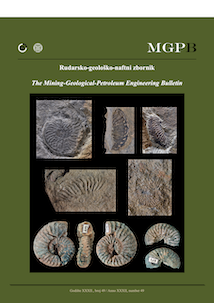Comparison of night sky brightness above Zagreb and a nearby rural location 2014-2017
DOI:
https://doi.org/10.17794/rgn.2020.2.5Keywords:
Light pollution, night sky brightness, ALAN evolution, atmospheric effectsAbstract
The results of monitoring light pollution near the center of Zagreb at the Faculty of Mining, Geology and Petroleum Engineering (RGN) for the period 2012 - 2017 were presented in a recent article (Andreić, 2018). The question that re- mained unanswered is how the night sky brightness behaves in the suburbs of Zagreb and in the nearby rural area. This article attempts to give some answers to this question by analyzing data gathered at the rural site of Merenje, located north of Zagreb. The main conclusion drawn is that the night sky brightness at both sites follows very similar patterns for clear sky conditions and is often similar for cloudy conditions, too. For both sites, no significant increase in zenithal night sky brightness was found in the observed period of 2014 - 2017. Thus, at least for the areas north of Zagreb that are in the shadow of Medvednica Mountain, the contribution of the light pollution from Zagreb and its growing outskirts remains unaltered. The main difference is in the level of the night sky brightness, the average for the RGN site being 16.9 mag/ arcsec2 and 18.9 mag/arcsec2 for the Merenje site. Additionally, the cloudy conditions enhance the light pollution of Za- greb a lot more, the difference being about 3.2 mag/arcsec2 for RGN, in contrast to 1.9 mag/arcsec2 for the Merenje site. No measurements exist for areas to the south, so no conclusions can be made for the situation there. Last, but not least, it was found that in cloudy conditions, the stronger light pollution of Zagreb is proportionally more enhanced by the clouds/fog than the smaller levels of light pollution at the Merenje site.
Downloads
Published
How to Cite
Issue
Section
License
Copyright (c) 2020 authors and journal

This work is licensed under a Creative Commons Attribution 4.0 International License.
Creative Commons-BY
Authors who publish with this journal agree to the following terms:
In agreeing this form, you certify that:
- You read the ethical codex of the RGN zbornik available at journal web.
- You submitted work is your original work, and has not previously been published and does not include any form of plagiarism.
- You own copyright in the submitted work, and are therefore permitted to assign the licence to publish to RGN zbornik.
- Your submitted work contains no violation of any existing copyright or other third party right or any material of an obscene, libellous or otherwise unlawful nature.
- You have obtained permission for and acknowledged the source of any illustrations, diagrams or other material included in the work of which you are not the copyright owner.
- You have taken due care to ensure the accuracy of the work, and that, to the best of your knowledge, there are no false statements made within it.
- All co-authors of this submitted work are aware of, and in agreement with, the terms of this licence and that the submitted manuscript has been approved by these authors.
Publication licence
You retain copyright in your submitted work, according to journal license policy (CC-BY). By signing this form you agree that RGN zbornik may publish it under the publication licence. In summary the licence allows the following:
Anyone is free:
- To copy, distribute, display, and perform the work.
- To make derivative works.
Under the following conditions:
- The original author must always be given credit.
- The work may not be used for commercial purposes.
- If the work is altered, transformed, or built upon, the resulting work may only be distributed under a licence identical to this one.
Exceptions to the licence
In addition to publishing the work printed under the above licence, RGN zbornik will also enable the work to be visible online.
The journal editorial can change the licence rules anytime but it cannot retroactively restrict author(s) rights.


